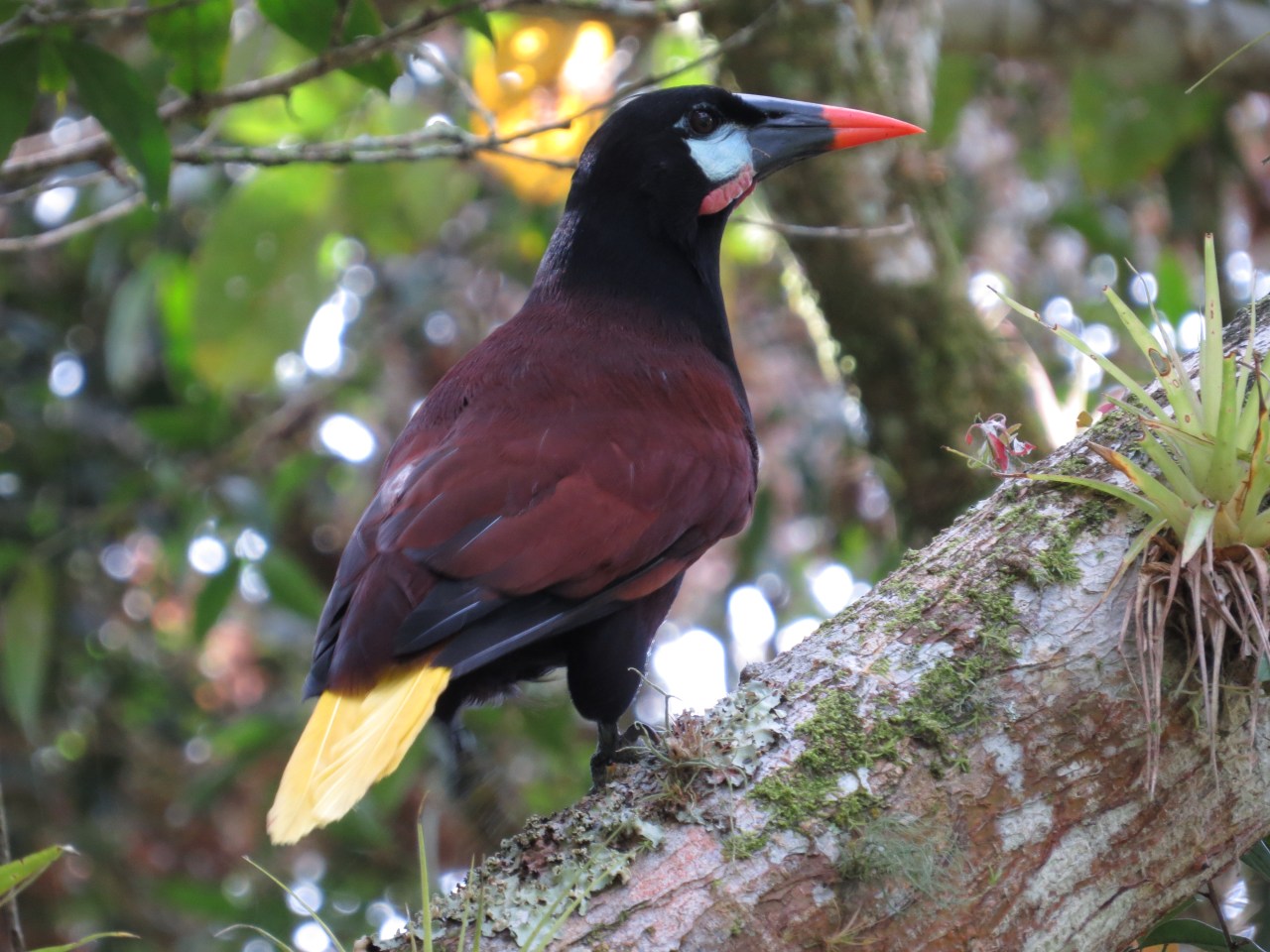It’s the slowest month of the year for birding but still a great time for birders to visit Costa Rica! When I wrote last week about the delights of common garden species here in Turrialba, Costa Rica, I quickly realized that there is sufficient daily variation to make each day interesting, even in August.

The weather is neither hot nor oppressive up here on the slopes of the Turrialba Volcano. We are at around 1300 m elevation, for British birdwatchers that means almost as high as Ben Nevis, the highest mountain in the British Isles.
Missing from my first August report were some common garden birds that did show up today. First up is the Golden-hooded Tanager (Tangara larvata):

Golden-hooded Tanager at Santa Rosa, photograph by John Beer
Like other tanagers, this species is a fruit-eater, though it also consumes small insects. It is not found easily further up the hill from San Antonio but it is a common sight in both the Caribbean and Pacific lowlands and middle elevations.
Also in the garden this morning, calling loudly, was our commonest hawk the Roadside Hawk (Rupornis magnirostris). This fairly small but beautiful raptor is found in most habitats, not just on the roadside! It tends, however, to avoid dense forests. It’s probably the first hawk you’ll see when you come to Costa Rica. This superb photo was taken at CATIE, Turrialba:

Adult Roadside Hawk with its typical grey head and rufous bars, courtesy of John Beer
We have many flycatcher species in the garden each day. Today brought a minor surprise in the form of a Sulphur-bellied Flycatcher (Myiodinastes luteiventris) , which joined Great Kiskadees, Social Flycatchers, Tropical Kingbirds and Yellow-bellied Elaenias to feed on the small black berries of a fruiting tree in front of our windows. Wish I knew the tree species!

Sulphur-bellied Flycatcher, photographed by John Beer
The Sulphur-bellied Flycatcher is normally a passage migrant, here only between March and May and then again from August to October. However, this species is also a breeding migrant and has bred in the garden. This happens between April and September. It spends the northern hemisphere winter months in western Amazonia.
By contrast the strange gurgling sounds of the colourful Montezuma Oropendola (Psarocolius montezuma) can be heard in the garden every day year-round. It is a colonial bird and its large, hanging nests are a common sight in the northern half of the country up to an elevation of around 1500 m. They prefer the highest trees, which in my case means the Rainbow Eucalyptus trees.

Montezuma Oropendola with its painted face and rather formidable-looking bill. Photo by John Beer taken at CATIE, Turrialba
Since we’re out of migration season warblers are harder to come by. However, the resident Tropical Parula (Setophaga pitiayumi) shows up fairly frequently and can be found as high as 1800 m on the volcano slope.

Tropical Parula with its burnt-orange throat. It never sits still for long. Photo taken in Aquiares, Turrialba, by John Beer
The only woodcreeper ever to appear in our garden is the Streak-headed Woodcreeper (Lepidocolaptes souleyetti). This year it nested very close by and thus has appeared regularly lately. Its strong trill note is rather distinctive. At our elevation of around 1300 m we are close to the high point of this common lowland bird. I once found a nest in a hole in a tree trunk a little higher up the slope at about 1400 m.

Streak-headed Woodcreeper, courtesy of John Beer
Not many hummingbird species have made an appearance in the garden this month. The Rufous-tailed Hummingbird (Amazilia tzacatl) is of course always here. It is found country-wide at all but the highest elevations.

Male Rufous-tailed Hummingbird at Casa Botania, San Vito; photo by John Beer
Many heliconias are now in flower and have attracted the Violet Sabrewing (Campylopterus hemileucurus), our largest hummingbird species. This is a middle-elevation species and the male is a particularly stunning sight when seen up close.

Male Violet Sabrewing, courtesy of Karel Straatman
This post could actually have been extended to show several other species that frequent our garden in the month of August. But migration season is now approaching and our common species will have to receive less attention as August draws to a close.


Oh those Oropendulas definitely have a gurgling sound! So loud but comforting as well! Nice photos – thanks for showing us what’s in the garden view… those migratory visitors will soon be consuming your time!!!
LikeLike